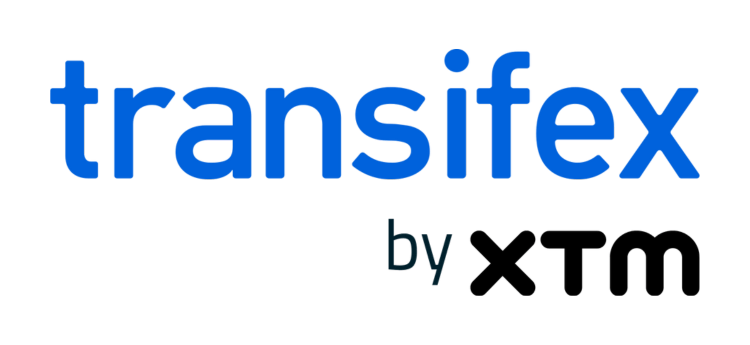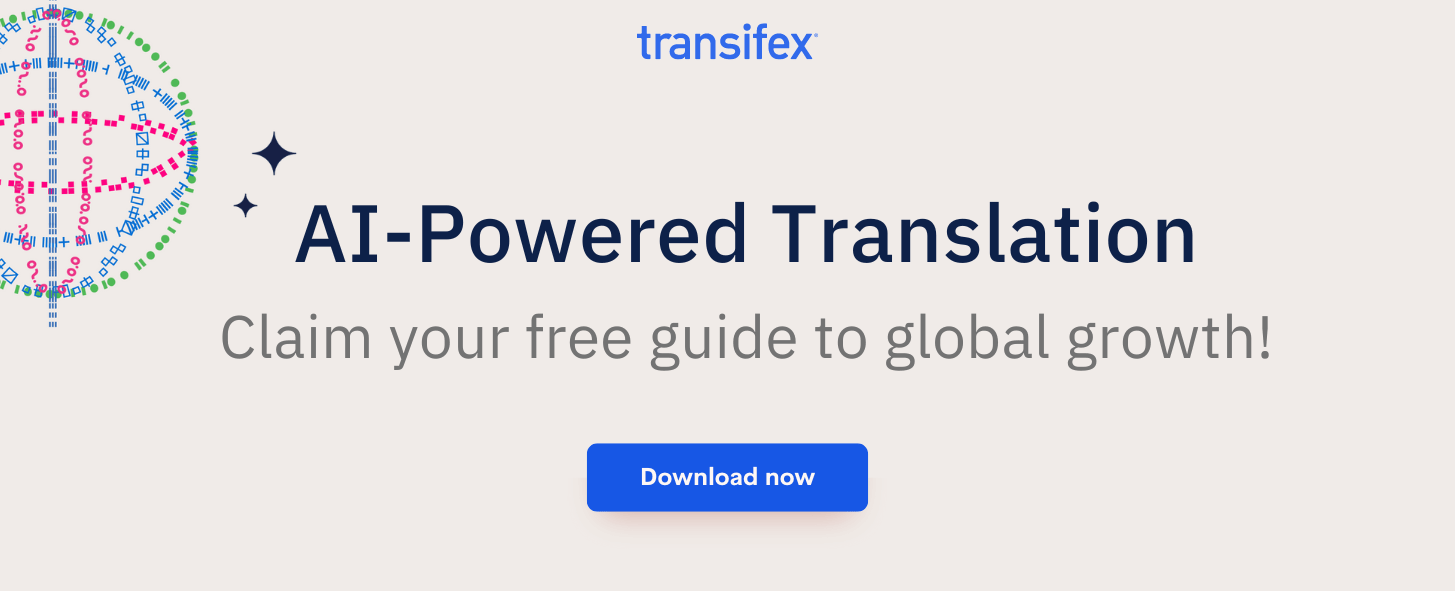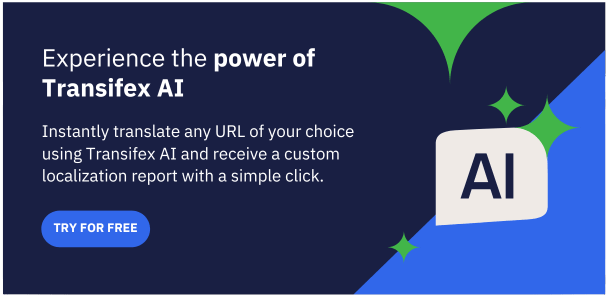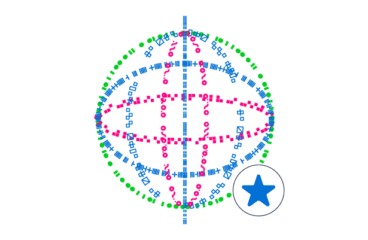Translation technology has changed the way businesses connect across borders. From rule-based systems to neural machine translation (nMT), communicating in multiple languages has never been easier.
However, these methods have limitations when it comes to translating context and capturing linguistic nuances.
Enter AI translation! Combining artificial intelligence and machine learning, it’s more accurate, scalable, and culturally sensitive. With AI translation, you can reach global audiences in real-time with culturally appropriate website content, social media posts, customer support, and more.
So, let’s look at how it’s changing multilingual communication and see what sets it apart from other types of machine translation.
The Limitations of Traditional Machine Translation (MT)
To understand AI translation, we need to know the origins of machine translation (MT). The first rule-based systems were developed during the 1940s and relied on linguistic rules and dictionaries to translate between languages. Government-funded MT research grew during the Cold War, especially for translating Russian and English.
In the 1980s, researchers developed statistical machine translation (SMT) to improve accuracy. It calculates the likelihood of word or phrase alignment across languages using huge sets of bilingual text. However, SMT struggles with accuracy, especially when it comes to context and linguistic details.
The Rise of Neural Machine Translation (NMT)
In the mid-2010s, neural machine translation (nMT) emerged to produce more context-aware translations. Because they look at whole sentences instead of just words, NMTs understand language holistically.
Yet training neural networks is resource-intensive because of data and computing power requirements. This can be tough for companies with limited tech resources or those translating languages with fewer resources.
Another challenge is the complexity of nMT models. They’re often “black boxes,” so it’s difficult to understand how they work. This lack of transparency can result in poor translation quality, especially if the training data is biased.
Despite these challenges, nMT has opened up opportunities for more sophisticated AI translation systems.
AI Translation: The Next Evolution
AI translation integrates advanced machine learning algorithms and Big Data to process whole sentences, understand context, and adapt to linguistic variations. The result? More accurate and fluent translations.
It overcomes the weaknesses of MT and nMT by continuously learning from real-time multilingual data, refining accuracy, and adapting to changing language patterns. Because AI translation systems can learn and evolve, they’re better at handling complex language combinations, like idioms, cultural references, and specialized terminology.
Advantages of AI Translation
AI translation, with its cutting-edge capabilities, offers several advantages over traditional MT and nMT. Here’s a look at three of them.
Improved accuracy and fluency
AI translation is known for its accuracy and fluency. This is because it uses NLP and machine learning algorithms to understand and interpret subtitles. As a result, you get grammatically correct and contextually appropriate translations.
Real-time translation capabilities
You can also continuously translate new content. This is especially useful in industries that need timely communication, such as customer service, e-commerce, and social media. It creates a better customer experience and reduces translation turnaround times and costs.
Scalability and adaptability to different industries
Finally, AI translation’s scalability makes it ideal for companies of all sizes. It doesn’t matter if you’re translating a couple of pages or managing a big localization project. You can even train AI models on specific industry data so that they adapt to different industries. For example, AI can translate technical terms and regulatory language for the finance industry.
Addressing Common AI Challenges
Yet even with AI translation’s amazing results, there are still some challenges. They include data privacy concerns and AI hallucinations. Let’s take a closer look at each.
Data Privacy
AI translation can be a powerful tool, but it can also be misused without appropriate data protection measures in place. When you translate, you need to make sure your content, including confidential information, is protected.
Transifex AI uses advanced technologies and practices such as Retrieval Augmented Generation (RAG), Zero Data Retention (ZDR), and per-customer fine-tuning. That way, your data stays yours and doesn’t get used in public models. Combined with Transifex TMS, it meets your scale and security needs while seamlessly integrating into your existing workflows.
AI Hallucinations
AI hallucinations are another thing to watch out for. They occur when AI models generate incorrect or misleading content, especially in translations. Hallucinations can hurt translation quality, which ultimately affects business communication.
Transifex mitigates this risk by combining artificial intelligence and human supervision. Our Translation Quality Index (TQI) lets you maintain translation accuracy by automatically identifying and flagging any potential errors.
Transifex AI and TQI: Showcasing the AI Difference
With all this in mind, let’s dive into how Transifex AI and TQI work together to deliver highly accurate translations in your brand’s unique voice and linguistic style.
Here’s how it works. Using advanced machine learning algorithms, Transifex AI generates translations, and TQI evaluates their quality in real-time, assessing accuracy, grammatical and syntactical quality, and adherence to your brand’s style.
How Transifex AI Stands Out from Other Translation Solutions
Unlike other tools, Transifex AI and TQI are designed to help you take a hands-off approach to localization. They work together to reduce unnecessary human intervention and identify where it’s actually needed, allowing you to allocate resources more efficiently.
Transifex AI automates repetitive translation tasks and uses your existing translation memory, glossaries, and style guides to create up to 60% production-ready content. Then TQI scores translation quality and flags any areas where humans should step in. This streamlined method significantly reduces manual post-editing and ensures faster and more efficient localization.
Interested in trying out the next-gen of language technology? Simply enter the URL you want to translate and let Transifex AI do the rest. No sign-up is required.
Transifex & Celonis: Localization Trusted By Industry Leaders
Now let’s see Transifex in action. Celonis, one of Forbes top 100 Cloud companies, needed a solution to provide highly accurate and scalable localized content to its international learner base.
Using Transifex’s centralized localization hub, Celonis tackled translation challenges with AI-powered efficiency, seamless tech stack integration, and automated processes. Our robust connectors and intuitive interface made it easy to onboard and translate its LMS in five languages, including training material, exams, and guides. And our AI & MT capabilities worked together with its brand-specific glossaries and translation memory (TM) autofill to provide a set-and-forget solution for multilingual localization.
The results?
- 2x speed to market
- 70% reduction in translation turnaround time
- 5x increase in course completions
- Expanded global reach
Tips for Implementing AI Translation in Your Business
As you can see, AI translation can help you quickly expand into new markets and meet customers’ needs – without sacrificing quality. But it requires careful planning. Here’s what you need to know about integrating AI translation, choosing the right solution, and measuring results.
Best Practices for Integrating AI Translation
Quality control is key when you’re integrating AI translation. Even though AI can greatly reduce human intervention, you still need to verify that translations meet your standards. Automate quality assessment with an AI-powered tool to eliminate unnecessary manual touchpoints and identify where they’re needed right away. This maximizes efficiency while ensuring quality.
You’ll also need a tool that generates conceptual translations based on your brand guidelines, target audience, and translation memory. That keeps translations consistent and accurate and ensures clarity.
How to Choose the Right AI Translation Solution
Choosing the right translation platform begins with assessing its key features. Make sure it offers support for multiple languages, real-time translations, and seamless integration with your existing systems.
A robust AI translation tool should also scale with your business needs. Look for a solution that supports agile and continuous localization so you don’t have to worry about frequent updates and changes. This keeps your translation processes flexible and responsive, growing with your needs while consistently delivering high-quality results.
Lastly, make sure the platform complies with relevant privacy laws, like GDPR, so your data is protected.
Measuring AI Translation Impact on Business Operations
To measure AI translation’s business impact, track key performance indicators like translation speed, cost savings, customer satisfaction, and market reach.
Transifex provides comprehensive analytics and real-time progress reports to evaluate your localization efforts. You can easily identify bottlenecks, streamline workflows, and ensure high-quality translations. Based on these insights, you can make informed decisions that enhance efficiency, reduce costs, and improve overall customer satisfaction.
By following these best practices, you can successfully integrate AI translation into your business operations.
Enter the Future with Transifex AI
In summary, AI translation represents the next evolution in multilingual communication. It offers businesses the ability to translate content faster, more accurately, and at scale—all while maintaining brand consistency. As this technology advances, it will support even more seamless real-time communication. Taking advantage of AI translation now will help you succeed in global markets well into the future.
With Transifex AI and our Translation Quality Index (TQI), you can achieve exceptional translation quality through a blend of AI technology and human expertise. Our AI-powered solutions ensure consistent, high-quality translations, while TQI provides in-depth analytics to monitor and improve translation performance. Plus, our team of experts is always on hand to offer guidance and support.
Ready to enhance your global communications?













